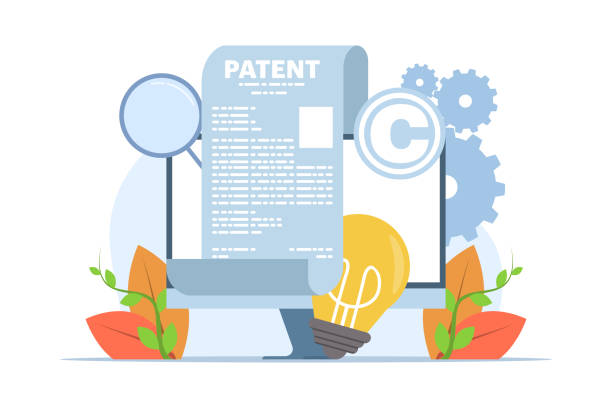Introduction
In an increasingly interconnected world, where innovation knows no borders, the need for harmonization in patent terminology has become a paramount concern. Patents, as a cornerstone of intellectual property rights, serve as incentives for innovation by providing inventors with exclusive rights to their creations. However, the lack of uniformity in patent terminology across jurisdictions poses significant challenges for inventors, patent offices, and legal professionals alike. This article delves into the complexities and hurdles associated with harmonizing patent terminology on a global scale.

The Importance of Patent Terminology
Patent terminology is the language that defines the scope and limitations of a patent. It includes a multitude of terms, definitions, and legal jargon that shape the boundaries of intellectual property rights. The precise and consistent use of terminology is crucial for clear communication and effective enforcement of patents. Harmonizing patent terminology is vital for several reasons:
1. International Collaboration and Innovation
In an era where innovation often involves collaboration across borders, a common language in patent terminology is essential. Inventors, researchers, and businesses from different countries must be able to understand and navigate the intricacies of each other’s patents. Harmonization facilitates international cooperation, leading to faster advancements and breakthroughs.
2. Reducing Ambiguity and Legal Uncertainty
Inconsistencies in patent terminology can give rise to ambiguity and legal uncertainty. The interpretation of patents becomes challenging when the same term carries different meanings in different jurisdictions. This can lead to disputes, litigation, and a lack of predictability, hindering the development and commercialization of new technologies.
3. Efficiency in Patent Examination
Patent offices worldwide are inundated with an ever-growing number of patent applications. Harmonizing patent terminology streamlines the examination process, making it more efficient. This efficiency is particularly crucial for patent offices with limited resources, enabling them to handle the increasing workload effectively.
The Current State of Patent Terminology
Despite the recognized importance of harmonization, achieving uniformity in patent terminology remains a daunting task. The challenges are deeply rooted in the legal, linguistic, and cultural differences among countries and regions. The current state of patent terminology reflects this complexity:
1. Language Barriers and Translation Issues
One of the primary challenges in harmonizing patent terminology is the diversity of languages used in patent applications. Patents are typically filed in the official language(s) of the country where protection is sought. Translating these documents accurately while preserving the intended meaning poses a significant challenge. Differences in linguistic nuances and legal concepts contribute to the difficulty of achieving precise translations.
2. Legal and Cultural Variances
Legal systems vary significantly across jurisdictions, leading to differences in how patents are drafted and interpreted. Cultural nuances also play a role, influencing the choice of words and expressions in patent documents. For instance, what may be considered a standard term in one legal system might have a different connotation or lack a direct equivalent in another.
3. Evolution of Technology and Emerging Fields
The rapid pace of technological advancement has led to the emergence of new fields and disciplines. This dynamic landscape often outpaces the development of standardized terminology. As new technologies evolve, patent offices and legal practitioners must grapple with creating and defining terms for concepts that may be unprecedented.
Initiatives for Harmonizing Patent Terminology
Recognizing the challenges, various initiatives and organizations have sought to promote harmonization in patent terminology. These efforts aim to bridge the gaps between different legal systems and languages. Some notable initiatives include:
1. Patent Cooperation Treaty (PCT)
The PCT, administered by the World Intellectual Property Organization (WIPO), provides an international framework for the filing and examination of patent applications. While PCT does not enforce uniform terminology, it establishes a standardized format for patent applications, promoting consistency in the presentation of information.
2. Cooperation between Patent Offices
Many patent offices collaborate to address the challenges of harmonizing patent terminology. Bilateral and multilateral agreements facilitate the exchange of information and best practices. Initiatives such as the Patent Prosecution Highway (PPH) aim to leverage work done by other patent offices, reducing duplication and promoting uniformity.
3. Common Patent Classification Systems
Harmonized classification systems, such as the Cooperative Patent Classification (CPC) and the International Patent Classification (IPC), provide a standardized framework for categorizing patents based on their technical content. While not focused on terminology per se, these systems contribute to a common understanding of the technical aspects of patents.
Persistent Challenges in Harmonizing Patent Terminology
Despite these initiatives, numerous challenges persist in achieving true harmonization in patent terminology. These challenges are multifaceted and require a comprehensive approach for resolution:
1. Divergent Legal Systems
The legal systems underpinning patent law vary significantly, even among countries that share similar economic and political structures. Attempts to create a one-size-fits-all approach to patent terminology must navigate these divergent legal frameworks. The balance between a harmonized global language and respect for national legal traditions remains a delicate one.
2. Cultural and Linguistic Nuances
Language is not just a tool for communication; it is deeply embedded in culture. Different languages express ideas and concepts in unique ways, and legal concepts are no exception. Achieving harmonization requires an understanding of the cultural and linguistic nuances that shape the interpretation of patent terminology.
3. Resistance to Change
Legal traditions and practices are deeply ingrained, and any attempt to introduce changes, especially on an international scale, often faces resistance. Patent professionals, accustomed to their local practices, may be hesitant to adopt new terminologies or standardized approaches. Overcoming this resistance requires effective communication and collaboration among stakeholders.
4. Rapid Technological Evolution
The pace of technological change introduces novel concepts and terminology at an unprecedented rate. Patent offices and practitioners must continually adapt to these changes, creating new terms and definitions. Harmonization efforts must be agile enough to incorporate emerging technologies while maintaining consistency across diverse fields.

Future Prospects and Recommendations
Achieving harmonization in patent terminology is an ambitious goal that requires ongoing collaboration and adaptation to evolving circumstances. Several strategies can be employed to address the challenges and pave the way for a more harmonized future:
1. Enhanced International Cooperation
Strengthening international cooperation among patent offices, legal professionals, and industry stakeholders is essential. Forums for regular dialogue and information exchange can help build consensus on standardized terminology and promote a shared understanding of evolving legal concepts.
2. Technology-Assisted Solutions
Advancements in technology, including natural language processing and machine translation, can aid in overcoming language barriers. Developing tools that facilitate accurate translation and interpretation of patent documents can contribute to a more harmonized global patent system.
3. Education and Training Programs
Educational initiatives targeting patent professionals, legal practitioners, and examiners can play a pivotal role in fostering a common understanding of patent terminology. Training programs that highlight the importance of harmonization and provide guidance on standardized practices can promote cultural change within the industry.
4. Flexibility in Harmonization Efforts
Recognizing the dynamic nature of innovation, harmonization efforts should be flexible enough to accommodate emerging technologies and evolving legal concepts. Regular reviews and updates to standardized terminologies can ensure relevance and inclusivity across diverse fields.
5. Public Awareness and Engagement
Creating awareness among inventors, businesses, and the general public about the benefits of harmonization can garner support for these initiatives. Engaging stakeholders in the process and addressing their concerns can foster a sense of ownership and collaboration.
Conclusion
Harmonizing patent terminology is a formidable challenge that requires navigating through legal, linguistic, and cultural intricacies. While progress has been made through initiatives like the PCT and collaborative efforts among patent offices, the road ahead is complex. Divergent legal systems, cultural nuances, and the rapid evolution of technology continue to pose challenges.
Addressing these challenges requires a concerted and sustained effort from the global intellectual property community. Enhanced international cooperation, technology-assisted solutions, education and training programs, flexibility in harmonization efforts, and increased public awareness are key components of a multifaceted strategy.
As the world becomes increasingly interconnected, the importance of a harmonized patent system cannot be overstated. The benefits extend beyond legal frameworks to the very heart of innovation, fostering collaboration, reducing uncertainty, and creating a more conducive environment for the advancement of knowledge and technology on a global scale. It is through collective action and a shared commitment to overcoming challenges that the vision of a harmonized patent terminology can be realized.
Unleash the full potential of your intellectual property with PowerPatent! PowerPatent Inc. is a trailblazer in the realm of IP management, offering a treasure trove of AI-powered tools that streamline and simplify the IP process.
With PowerPatent, you’re not just protecting your innovations; you’re wielding them as strategic assets. The PowerPatent Platform is your all-in-one suite, guiding you through every stage of the IP lifecycle.
From AI-assisted invention capture to insightful patent landscape analysis, it’s like having a personal IP wizard at your fingertips.
Plus, with risk assessment features, you can dodge legal pitfalls and build an invincible patent portfolio. Whether you’re an inventor guarding your brainchild or a patent attorney seeking to supercharge your workflow, PowerPatent is your secret weapon.
Don’t just protect your IP, empower it! ? Click here to discover the power of PowerPatent and embark on a journey to IP greatness.

Leave a Reply